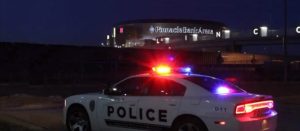Fireball Crash of UPS Cargo Jet Near Louisville Airport Kills and Injures Many
The devastating accident took place near Louisville Muhammad Ali International Airport in Louisville, Kentucky, United States. On Tuesday, November 4, 2025, at approximately 5:13 p.m. local time, UPS Flight 2976 — a three-engine McDonnell Douglas MD-11F cargo jet operated by UPS Airlines — crashed shortly after takeoff from runway 17R, erupting into a towering fireball. The aircraft disintegrated on impact, sending shockwaves through nearby streets and engulfing buildings in flames.
According to official statements, at least 12 people have been confirmed dead, including a young child, with 15 injured and 16 still unaccounted for as of the latest update. All three crew members aboard the aircraft perished in the accident. Emergency responders worked through the night as recovery operations continued amid intense heat and heavy smoke.
Victims and Impact
The victims include the three UPS crew members aboard the aircraft, whose names have not yet been publicly released pending notification of family. Nine people on the ground also lost their lives, including one child and several employees from nearby industrial facilities. Officials have said that the victims were mainly workers caught inside warehouses and auto-parts shops that were struck or set ablaze by the explosion.
Fifteen additional people suffered various injuries, including severe burns, shrapnel wounds, and smoke inhalation. Several are in critical condition at the University of Louisville Hospital. Sixteen more individuals remain unaccounted for, as rescuers continue to sift through the wreckage of collapsed buildings and scorched debris.
The crash occurred in an industrial zone adjacent to the airport. Two local businesses were directly impacted — a petroleum recycling plant and an auto-parts distribution center. Both structures were either destroyed or heavily damaged by the ensuing fires. Firefighters battled the inferno for more than four hours before finally bringing it under control.
Sequence of Events
Witnesses and dashcam footage captured the aircraft lifting off from the runway when flames suddenly erupted from its left wing. Within seconds, the plane banked sharply, losing altitude rapidly before plunging into the ground and exploding on impact.
Preliminary findings from the National Transportation Safety Board (NTSB) suggest that the aircraft’s left engine separated from the wing during takeoff, triggering a catastrophic loss of control. The MD-11 then descended into the industrial area south of the airport, igniting massive secondary explosions as it struck fuel tanks and electrical equipment.
The impact created a crater nearly 50 feet wide, scattering debris across several blocks. The shockwave shattered windows and damaged vehicles in neighboring areas, while thick black smoke blanketed the sky over Louisville for hours.
Aftermath and Investigation
Authorities issued a shelter-in-place order for a five-mile radius around the airport immediately following the crash, which was later reduced as the fires were contained. Louisville International Airport temporarily suspended operations, causing widespread disruption to passenger and cargo flights. UPS also paused operations at its Worldport hub, its largest global air-cargo facility, which employs around 20,000 people.
By the following morning, investigators had recovered both the cockpit voice recorder and flight data recorder from the wreckage. The NTSB confirmed that they are examining maintenance records, recent inspection logs, and engine data to determine the cause of the engine separation.
Local officials, including Kentucky Governor Andy Beshear and Louisville Mayor Craig Greenberg, visited the crash site and expressed condolences to the victims’ families. Governor Beshear described the event as “heart-breaking,” adding that the state would provide full support to those affected.
Aircraft and Broader Context
The UPS cargo jet involved in the disaster was a 34-year-old McDonnell Douglas MD-11F, originally built in 1991 and later converted for freight use in 2006. The aircraft had undergone regular maintenance and was reportedly carrying standard cargo, with no hazardous materials on board. However, the large amount of jet fuel required for its planned route to Honolulu, Hawaii, intensified the post-crash fire.
The Louisville crash represents one of the deadliest air cargo accidents in the United States in recent decades. The tragedy has reignited debate over the safety of aging cargo aircraft and the rigorousness of maintenance oversight for high-cycle freighters.
As of the latest reports, recovery teams continue to search the debris field for missing individuals. Authorities have warned that the death toll may rise further as investigations progress and more victims are identified.
In the heart of Louisville, grief, shock, and disbelief hang heavy in the air. The community, now scarred by one of the city’s worst aviation disasters, continues to mourn those lost while seeking answers to how such a catastrophic failure occurred on a routine UPS cargo flight.




